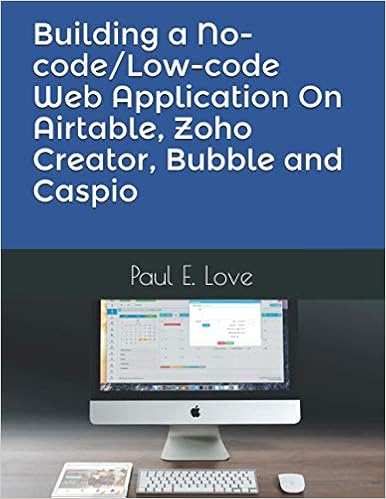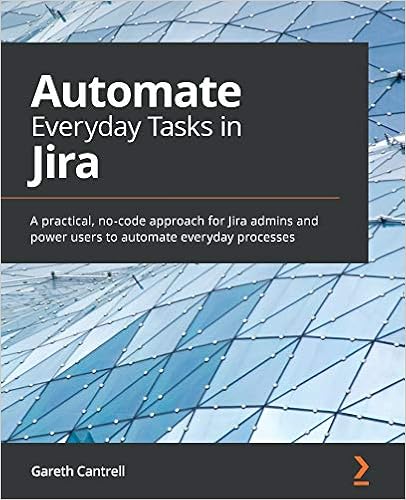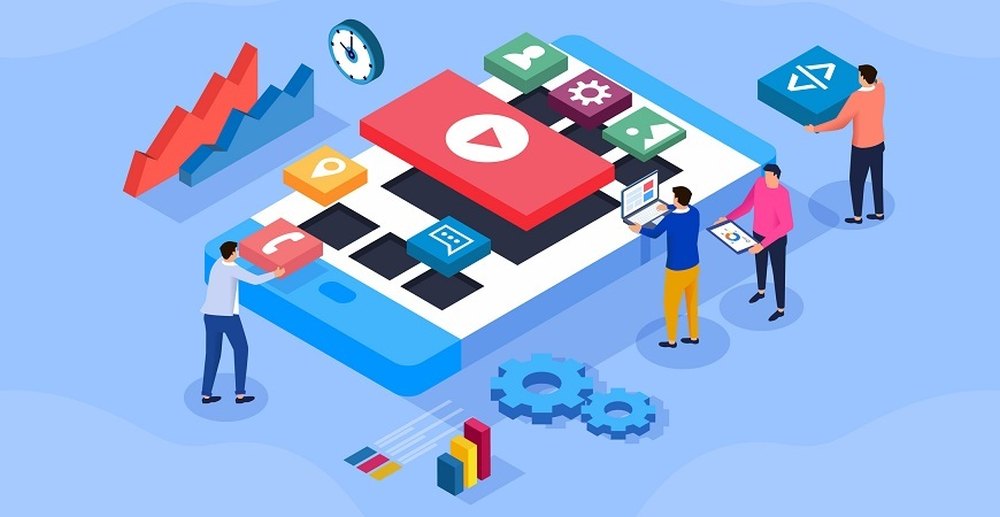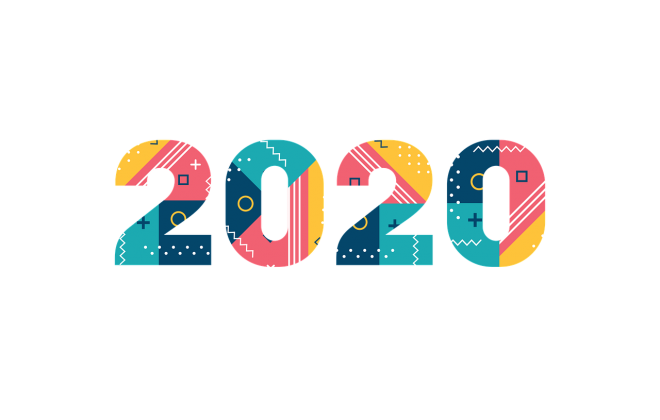Top 8+ Best Books on No Code Development & Platforms
No code platforms – sometimes referred to as low code platforms – allow users to come up with applications and processes with little to no coding required. To help you get an idea, you can create a website with drag and drop applications, but you can also come up with a mobile application in the exact same manner.
No code development books allow you to provide exquisite results without spending months or even years learning how to code. There is no experience needed to accomplish your goals – and not just in any manner, but in a streamlined way. Such books represent a stepping stone for newbies – here are some of your best options on the market.
Our Favorite No-code, Low-code Platforms
- Node-RED (low-code programming for event-driven applications)
- .Bubble (web apps without code)
- Makerpad (automating workflows)
- Salesforce (automating workflows)
- Oracle Apex (low-code enterprise apps)
- Obviously.ai (data predictions with no code AI tool)
- Lobe.ai (no code visual AI models, for image recognition)
Our Favorite No-code, Low-code books
AmazonLow-Code/No-Code (The Future of Work Book 3), by Phil Simon
The tech labor market is in crisis, with a projected 500,000 software developer deficit in the US by 2024 which couldn't even solved by ChatGPT's coding capabilities. This shortage impacts businesses, impeding technological advancements and adaptation to remote work models.
Phil Simon's book offers a solution, highlighting how new tools and a fresh wave of employees can help organizations meet their tech needs without solely relying on traditional developers. This timely resource provides insights and strategies for navigating the current tech landscape.

Practical Node-RED Programming, by Taiji Hagino
In Practical Node-RED Programming, you’ll start with a solid foundation in working with Node-RED and then go on to explore its capabilities by building sample applications based on real-world use cases. The bookb describes core concepts of Node-RED and how it can be used to build IoT applications, the structure of a Node-RED application and how web sockets work. It also helps to understand how to send messages, images, and files over web sockets and how to handle HTTP requests, responses, cookies, sessions, JSON objects and XML objects.
Practical Node-RED Programming is a book for web developers, who want to learn about the Internet of Things (IoT) by creating interesting projects using the Node.js programming language and the Node-RED platform.

Building Low-Code Applications with Mendix, by Bryan Kenneweg, Imran Kasam and Micah McMullen
This book allows you to turn your ideas into functional applications – there are a few tips and tricks explained as well, so apart from the simple operation, you also understand how things work. Discover the ever-increasing demand for applications without having to code from scratch, but also learn how to come up with high availability applications without spending a fortune.
The book will introduce you to Mendix as well. Learn more about its features and capabilities – find out what product design means and what it takes to deliver by implementing real-world solutions. This visual approach enables you to create both mobile and web apps using drag and drop systems and components. The graphic interface is user-friendly and straightforward – no experience needed.
As you progress through the book, you will find some reasons to create your first app and explore the visual environment that can push your app further. Once the app is ready to go, you will be able to tell how to enhance it with custom rules and logic apps. The book will also teach you how to defend it against malicious scripts, troubleshoot it, and debug it.

Hands-On Low-Code Application Development with Salesforce, by Enrico Murru
There are a few key features that make this release one of the best no-code development books out there. First, you can create applications with an impressive user experience without having to spend months learning to code or paying developers a fortune. Second, you will discover the Salesforce application, its features, and what it takes to develop professional applications.
Low or no-code platforms will let you create something visually appealing and fully functional without ending up trapped in programming issues. The app has some great features for design and development, becoming one of the top choices for newbies. The book will help you create applications to solve your business issues through the declarative framework provided by this software.
You will start with a bit of education regarding custom objects, formulas, or fields, not to mention validation rules. You will then discover some built-in tools, such as Lightning Flow, Process Builder, and so on – suitable for the actual automation. By the end of it, you will be ready to customize everything in order to meet the requirements of your business.

Building a No-code/Low-code Web Application On Airtable, Zoho Creator, Bubble, and Caspio, by Paul E. Love
This is not the author’s first book on no-code platforms and similar demands. The story behind the new release is based on a different book. That book tried to come up with a payroll data entry application through Google Sheets. It was a hassle, but it got done. Eventually, the app was moved to Airtable for even more functionality. This move led to a second book on a similar topic.
Just like previous books, this new release is based on the author’s personal experience. It does not come from someone who claims to know everything. Instead, it is a book that allows you to follow the same steps – straightforward, easy to understand and without too much jargon language. What is the purpose of this book? Teaching you how to develop a quick app on a bunch of different platforms.
The book is suitable for those who need no-code platforms, as well as low or no-code development programs for simple and immediate apps – no super-polished graphics or sophisticated requirements. Obviously, as you gain more and more experience, you will inevitably discover more elements to implement, and your work will naturally become better and better.

Automate Everyday Tasks in Jira, by Gareth Cantrell
You are about to discover how to come up with daily repetitive tasks that require lots of work with no coding experience whatsoever. It sounds like a dream come true, but it is totally doable. You will also discover automation in the Jira software family, not to mention the possibility to explore different projects and solutions that define the features associated with Jira.
The book provides a deep intro into one of the best no-code platforms out there – Jira. The app makes it fairly simple to track the progress of your work, but it may also feel repetitive at times. Automation eases everything and allows increasing overall productivity. You will need to adopt a hands-on approach for maximum efficiency and the implementation of various methodologies.
The book will take you one step at a time. Learn how automation in Jira actually works and discover the optimal practices to write rules. Discover how blocks of automation are implemented, identify triggers, actions, and conditions. Things will become more and more complicated as you go through the book, but by the end of it, you will have a clear image of how automation works.

Oracle APEX 20 Full Stack Set For Beginners, by Riaz Ahmed
This is not a book on no-code development, but a set of three different books that will teach you everything you need to know. They are all dynamic and will push you into becoming a professional web developer without wasting months or years learning how to code. Obviously, prior experience does help in the process, but it is not needed whatsoever.
The books will build the foundation needed to develop dynamic web applications based on data. The process is quick and requires no code platforms – Oracle APEX. The app development framework is suitable for newbies, but it obviously has a learning curve. You can come up with stunning visual applications by using drag and drop wizards – no need to write thousands of sophisticated codes.
Another good news is that Oracle APEX is free of charge. It will allow you to develop solid applications and solve real day-by-day problems. You do not need to learn technologies like JavaScript, CSS or HTML. The software will do the heavy lifting – you just have to focus on the real problem. Take your time and go through each chapter – make sure you understand it thoroughly before moving on.

Understanding Oracle APEX 20 Application Development, by Edward Sciore
This book is aimed at both newbies and professionals. It targets one of the top no-code platforms out there – Oracle APEX. It teaches people how to come up with quick, practical, and effective web applications using the Application Express. This is not the first edition, but the third one – well updated with new techniques.
While anyone can learn something useful from this book, it is mostly aimed at those who are new to APEX. As you go through it, you will realize that some aspects go into very small details, so even experienced users can learn something new. All in all, it will teach you how to come up with a demo application that illustrates every concept in the software.
What are you going to learn? You will figure out how to build functional and visually appealing apps from the ground. You will also understand how to customize and enhance pages created through wizards, learn more about security implications, write a bit of code for verification and even build more complex components.

Oracle APEX Cookbook, by Marcel Van Der Plas and Michel Van Zoest
No code development has never been easier. This book has been released in a few editions – grab the latest one for the ultimate updates. You will get straight into developing modern applications – both web and mobile – using the so-called “recipes” provided by two experienced authors. It goes from the basics and takes you to the most advanced features of Oracle APEX.
Explore Oracle APEX and learn how to create apps with JavaScript or AJAX without knowing how to code, but also discover the benefits of CSS3 and HTML5 support. Each example is well organized to help you understand exactly what you are doing – rather than learn things as they are with no logic whatsoever.
So, what are you going to learn? Create feature-rich web apps, develop smartphone apps with jQuery Mobile, work with the newest plugins, make development a piece of cake, develop CSS3 and HTML5 supported web apps and discover a plethora of examples that make the whole job a matter of minutes only.
Conclusion
Bottom line, there are no doubts about it – no code platforms are slowly taking over and web apps will become available to everyone. It makes no difference if this is the first time you open such a book – any of the above-mentioned books will push you in the right direction and show you the easy way to discover no code development.
My profession is online marketing and development (10+ years experience), check my latest mobile app called Upcoming or my Chrome extensions for ChatGPT. But my real passion is reading books both fiction and non-fiction. I have several favorite authors like James Redfield or Daniel Keyes. If I read a book I always want to find the best part of it, every book has its unique value.







